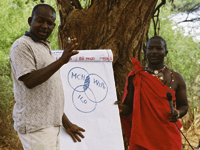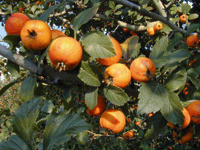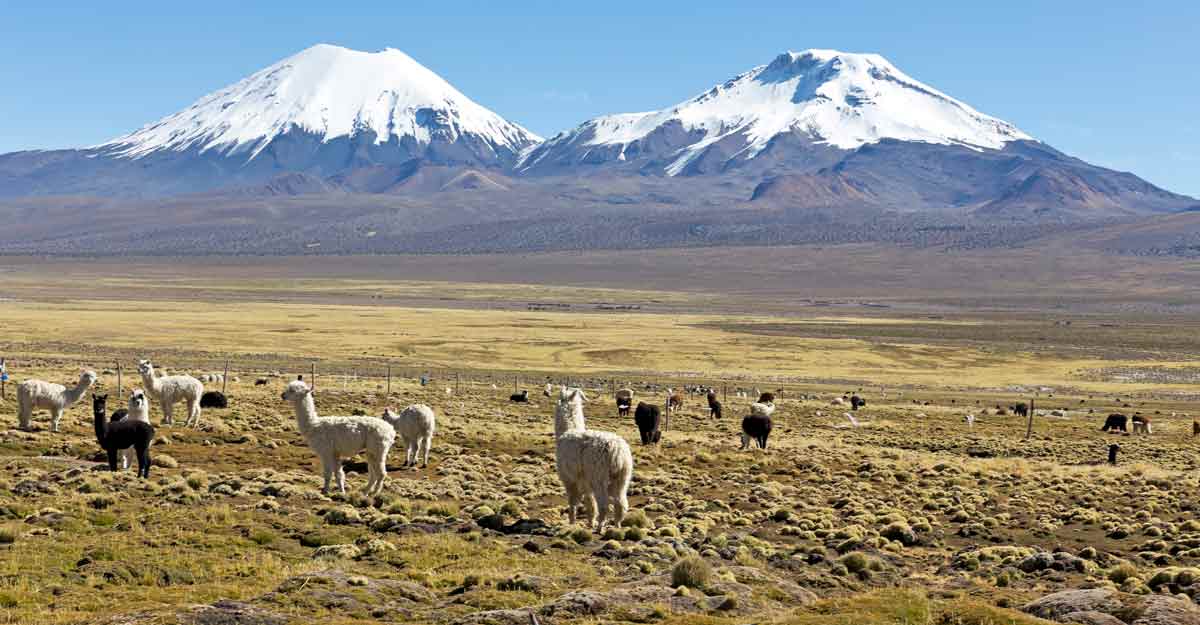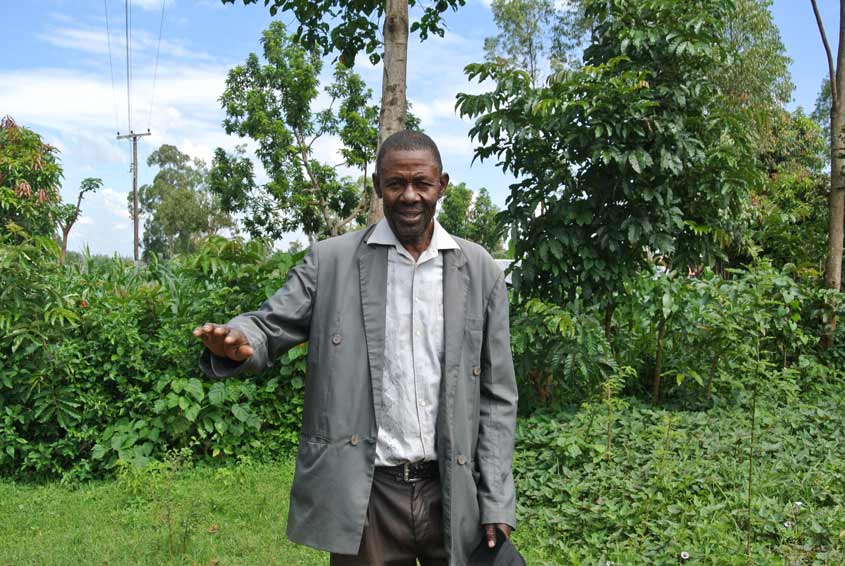In 2006 and 2007, nearly 80 million Swiss francs of WIPO’s regular budget (mostly funded by income from WIPO’s services to the private sector) will have been dedicated to work in support of developing countries and of countries in transition. Each year, however, additional technical assistance and capacity building projects are made possible thanks to funding from voluntary contributions. These contributions are anticipated to provide 12.9 million Swiss francs in 2006 and 2007, and a similar amount in the next biennium. WIPO has begun to take a more proactive approach to mobilizing donor funding for development projects and recent discussions within the framework of the Development Agenda have given added impetus to these efforts. This article outlines the new approach and highlights a few examples of projects which are ripe for support from new partners.
WIPO has enjoyed long-term relationships with a number of key donor countries, which provide what are known as Funds-in-Trust (FIT), to finance technical assistance projects. WIPO’s FIT arrangements with France and Japan, for example, began as far back as 1981 and 1987 respectively. Currently, WIPO also has FIT agreements with the Republic of Korea (see next article), Finland, Spain, the United States, and the European Union, and on September 10 signed a new agreement with the government of Italy. Most of these are managed by staff in WIPO’s Technical Assistance and Capacity Building Sector.
WIPO’s work also benefits in many other ways from donor support, such as through direct financial support for activities, and through a number of cost-sharing and co-hosting arrangements. One recent innovation is the WIPO Voluntary Fund for Accredited Indigenous and Local Communities, which was set up to enable representatives of indigenous and local communities to participate in the meetings of the Intergovernmental Committee on Intellectual Property and Genetic Resources, Traditional Knowledge and Folklore (IGC). The Fund, which began operating last year, has received contributions from, the Swedish International Biodiversity Programme (SwedBio/CBM), the Christensen Foundation, the Swiss Federal Institute of Intellectual Property, as well as the governments of France and South Africa.
“Mobilizing extra-budgetary resources to support WIPO’s technical assistance and capacity building work is core to our ability to deliver results in this area of ever increasing demand for WIPO’s expertise. This is why we are reaching out to the donor community and other potential partners” - WIPO Assistant Director General Geoffrey Onyeama.
Reaching out
As demand from developing countries evolves, so WIPO’s activities have expanded from offering advice on how to modernize IP laws and administration to helping countries build up their national capacity for creating, managing and exploiting IP assets. Increasing recognition of the role of IP in promoting economic growth within the knowledge economy has brought with it increased interest and potential new partners for WIPO’s work with developing countries. At the same time, the UN system as a whole has been exploring the potential synergies offered by broader partnerships in enabling the international community to meet the Millennium Development Goals.
Recognizing the potential benefits of such partnerships and of expanding available resources for developing country needs, Director General Kamil Idris decided in 2005 that WIPO should adopt a more proactive approach to partnerships and resource mobilization. In late 2006, WIPO established a dedicated Section for the Mobilization of Extrabudgetary Resources.
WIPO is now broadening its donor base by developing relations with potential new donors, and strengthening links with both the multilateral and bilateral donor community. This involves identifying synergies between the needs of developing countries, WIPO’s work, and the priorities of different donors or potential partners. Working on a thematic basis, the new section is developing a portfolio of WIPO’s projects and activities suitable for this purpose - some examples of which are highlighted in the boxes below.
Annual donor meetings, new interactive pages on the WIPO website, and other dedicated information resources will help to improve communication with new and existing donors. The information tools will include an extrabudgetary resources and partnerships database, details of WIPO’s resource mobilization policies, reports on the funds mobilized and case studies demonstrating the benefits resulting from extra-budgetary resources.
Match-making
The expertise required to attract support from new donors and partners resides first and foremost with the WIPO staff engaged in carrying out the relevant activities. The new Section will play the role of match-maker, circulating donor profiles to WIPO program managers and discussing the needs expressed by their network of contacts in developing countries, putting donors in touch with the right people in WIPO, coordinating approaches and helping to formulate donor or partnership agreements.
Successful partnerships depend on good communication and transparency - partners and beneficiaries understanding each other’s priorities and constraints; agreeing what they want to achieve and how best to achieve it; and being able to show the positive impact that the partnership has been able to bring about. WIPO’s resource mobilization efforts aim to bring together the right partners for the right projects to achieve the right results.
If you are interested in discussing ways you might partner on these or other projects or would like further information on WIPO’s resource mobilization and partnership initiatives, please contact smer@wipo.int ; tel. ++41 (0) 22 338 8038
Following are four examples of current projects open to support from potential new partners:
| Digitizing Cultural Heritage |
|---|
Digital technologies offer unprecedented opportunities to promote, protect and revitalize intangible cultural heritage, such as folklore and traditional art forms. When recorded and disseminated in digital form, traditional music, designs and art can reach new audiences in niche markets, so promoting development of the community which creates them. But it can also lead to their misappropriation and misuse. Efforts to preserve culturally sensitive materials have sometimes unwittingly led to their unauthorized commercial exploitation. Indigenous organizations, museums, archives and researchers have therefore called for guidelines on the IP issues and options which arise in this area. The WIPO Creative Heritage Project is developing such guidelines in consultation with indigenous communities and cultural institutions. The Project offers advice on managing the IP options, as well as IT support to help communities and institutions record and digitize their cultural expressions and establish websites through which to make these available, should they so wish, on their own terms. Pilot projects are now underway with a Maasai community in Kenya – shown here working in partnership with the International Labour Organizaton (ILO) - with museums and archives in Sudan and with the IP Office of Mongolia. |
| Patent Information and Patent Landscaping |
|---|
| Patent information is the sum total of the technical information contained in every patent document ever published. It is the largest most up-to-date and well-classified repository of technical knowledge in the world, amounting to tens of millions of patent documents, with some1.6 million added each year. This treasure trove can be accessed through many free patent databases, such as WIPO’s PatentScope search service, the database of the United States Patent and Trademark Office (USPTO) and the European Patent Office’s esp@cenet. Some of the technologies described in patent information are freely available for use by entrepreneurs and innovators; others may be used through licensing agreements with the rights holder. Patent information has also become a strategic tool for businesses. As well as being used to evaluate “freedom to operate” questions, it may help a business to forecast the direction of technical change, or to assess a company’s relative technological strength in a marketplace. Analyzing trends revealed by patent information helps identify potentially profitable areas for R&D, key technologies and market opportunities. Public disclosure of the new technology in inventions is a fundamental element of the quid pro quo on which the patent system is based. Yet knowledge of the availability of this resource, let alone how to use it, remains very limited. WIPO works with developing countries to enhance knowledge of how to access and use patent information in order to realize its economic and commercial benefits. |
| Technology Transfer, Licensing and Patent Drafting |
|---|
| Developing country researchers and scientists are achieving valuable research results in scientific fields, including renewable energy, medicines, agriculture, water and waste management. Most of this innovation takes place in universities and publicly funded R&D institutions, providing potential new technologies for local businesses, in particular small and medium-sized enterprises. Given support and assistance to help build innovation systems, these research institutions and businesses may play a seminal role in knowledge-led economic growth. But they face many challenges, not least a shortage of trained professionals able to draft patents, manage IP assets and negotiate technology transfer contracts. WIPO’s SuccessfulTechnology Licensing (STL) Training Program, already used for more than 30 countries, combines theory with practical role-play exercises to teach the knowledge and skills required. The Program is offered at both basic and advanced levels. The latter can be customized to meet the specific needs of the participants, such as focusing on advanced licensing issues. To ensure sustainability, the program can also be organised as training for trainers. It comes complete with all the necessary materials for on-going use and reference by participants. In response to demand from Member States, WIPO has also introduced a comprehensive 10-day patent drafting training program, designed specifically for scientists and researchers. The program is adapted to trainees’ particular field of expertise, whether this be in mechanical engineering, biotechnology, chemistry, electrical or computer technology, etc., and the complete training kit includes a copy of the WIPO Patent Drafting Manual. The course can also be followed as a distance learning program, with supervision by WIPO appointed tutors. |
| Protecting Plant Varieties |
|---|
WIPO’s sister organization, the International Union for the Protection of New Varieties of Plants (UPOV), is similarly seeking to mobilize resources for projects in developing countries. Close cooperation between WIPO and UPOV helps provide both potential beneficiaries and donors with a full range of IP solutions.
UPOV encourages countries to introduce IP systems to protect new plant varieties, with the aim of promoting the development of improved plant varieties for the benefit of farmers, growers and consumers. Effective plant variety protection (PVP) plus UPOV membership can open a door to economic development, particularly in the rural sector, providing an incentive for plant breeding in many different situations. The UPOV system offers possibilities for cooperation to facilitate the rapid implementation of PVP. But many UPOV members also consider it beneficial to develop the facilities and expertise to undertake the examination of new varieties on their own behalf. In response, UPOV runs programs offering new members extensive practical assistance, with financial support provided by donors. The key elements of the technical assistance offered by UPOV include: distance learning programs for officials and experts; practical training of examiners; technological support, such as the supply of specialist software packages and technical guidance documents and financial support for participation in UPOV technical meetings. The UPOV program therefore also provides support for seminars to raise awareness of PVP among stakeholders at the national or regional level. |





